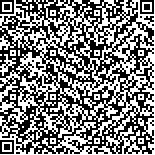| Author Name | Affiliation | | Qichang An | Changchun Institute of Optics, Fine Mechanics and Physics,Chinese Academy of Sciences,Changchun 130033,China
Graduate University of Chinese Academy of Sciences, Beijing 100039, China | | Jingxu Zhang | Changchun Institute of Optics, Fine Mechanics and Physics,Chinese Academy of Sciences,Changchun 130033,China | | Fei Yang | Changchun Institute of Optics, Fine Mechanics and Physics,Chinese Academy of Sciences,Changchun 130033,China | | Hongchao Zhao | Changchun Institute of Optics, Fine Mechanics and Physics,Chinese Academy of Sciences,Changchun 130033,China |
|
| Abstract: |
| To measure the jitter performance of the Tirthy Meter Telescope tertary mirror(TMT M3), the model of jitter based on the accerleration signal is established. First and foremost, the procedure TMT required to processs the jitter data is presented. Then, the jitter of the system is divided into two parts: powered jitter and unpowered jitter. The metric of the jitter is required to be in the form of displacement or angle. So the frequency integration is involved to minify the error source introduced by the tending iterm in the time domain integration. In the evaluation of the power jitter, the accelerometers are used to obtain the rigid body motion of the tertiary mirror. The random decrement technique and dominated mode theory are applied to obtain the model of unpowered jitter. A classical telescope performances a 1.6” RMS jitter metric; for a four meter scale system, the resonance frequency is around 107 Hz, powering, with 0.14% damping. Consequently, the tip (183 Hz,0.6%) and tilt (193 Hz, 0.19%) are both be measured. Using this model, the system engineers can estimate the unpowered jitter when the system is presented in the distortion. |
| Key words: TMT M3 numerical integration jitter transfer function power spectral density wind load |
| DOI:10.11916/j.issn.1005-9113.2016.06.010 |
| Clc Number:TH751 |
| Fund: |






